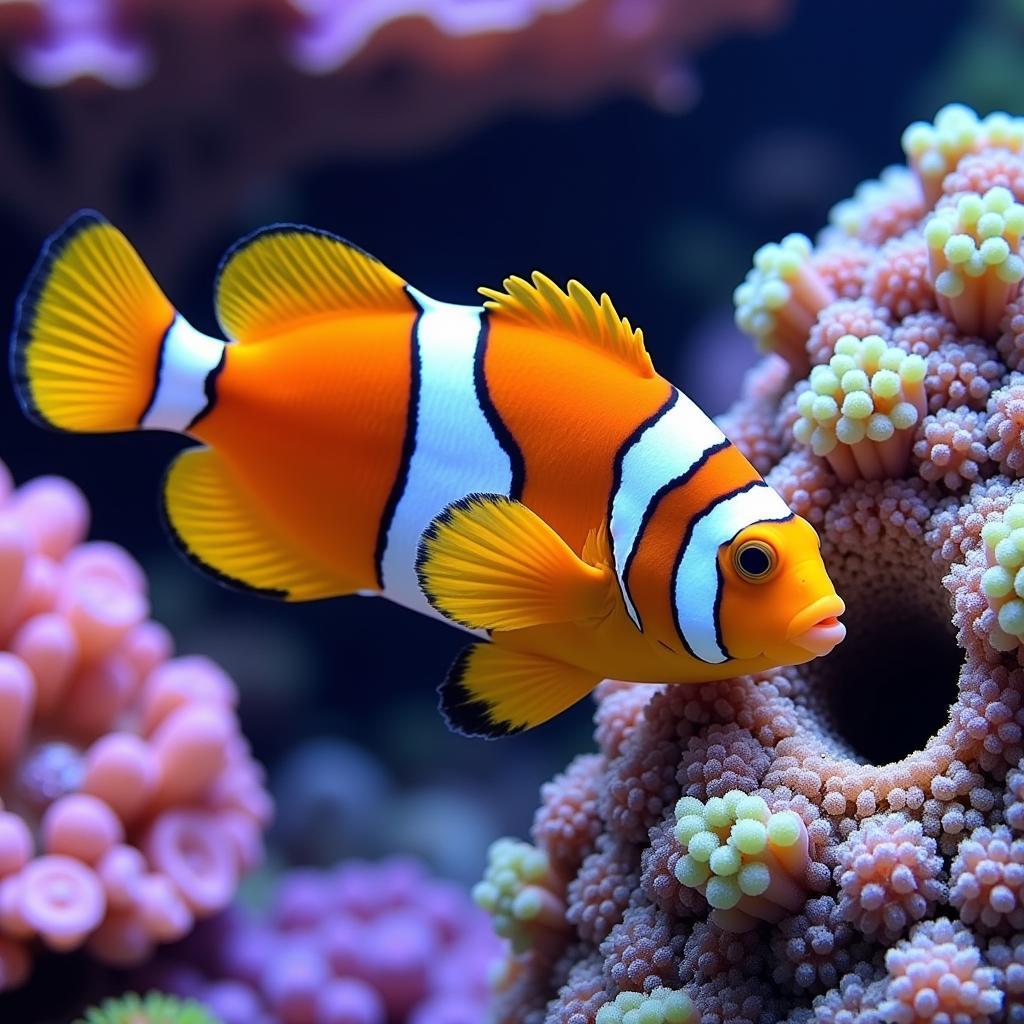The African Clown Wrasse: A Colorful Gem of the Reef
The African Clown Wrasse, also known as Coris aygula, is a vibrant and captivating fish that adds a splash of color to the reefs of the Indo-Pacific. This article delves into the fascinating world of this unique wrasse, exploring its characteristics, habitat, behavior, and care requirements for aquarium enthusiasts.
Discovering the African Clown Wrasse: Habitat and Distribution
The African clown wrasse is primarily found in the tropical waters of the Indo-Pacific region, stretching from the eastern coast of Africa to the islands of the central Pacific. They prefer coral-rich areas and lagoons with ample hiding places and abundant food sources. These wrasses are typically found at depths of 3 to 30 meters, where they navigate the complex reef structures with ease. Their geographic range contributes to their adaptability to varying water conditions, but consistent temperature and salinity are crucial for their well-being. Understanding their natural environment is vital for replicating a suitable habitat within an aquarium setting.
The diet of the African clown wrasse primarily consists of small invertebrates, crustaceans, and mollusks. They are adept hunters, using their elongated snout to probe crevices and extract their prey. This natural foraging behavior should be considered when designing an aquarium environment and providing a varied diet.
 African Clown Wrasse foraging in a vibrant coral reef habitat
African Clown Wrasse foraging in a vibrant coral reef habitat
African Clown Wrasse Appearance: A Riot of Color
The African clown wrasse is renowned for its striking appearance, earning it the moniker “clown” wrasse. Juvenile African clown wrasses display a distinct pattern of orange and white bands, providing excellent camouflage among the corals. As they mature, their coloration transforms dramatically. Adult males develop an elongated snout and vibrant hues of blue, green, orange, and white. The patterns can vary, but the vibrant colors are always a spectacle. The females retain a more subdued coloration, often with more pronounced orange and white bands. This sexual dimorphism is a key characteristic of the species.
African Clown Wrasse Behavior and Temperament
African clown wrasses are known for their active and curious nature. They are diurnal, meaning they are most active during the day, spending their time exploring their surroundings and foraging for food. They are relatively peaceful community fish, but they can occasionally display territorial behavior towards other wrasses, particularly those of similar size and appearance. Providing ample space and hiding places within the aquarium can help mitigate territorial disputes.
African Clown Wrasse Care in the Aquarium: A Comprehensive Guide
Keeping African clown wrasses in a home aquarium requires careful planning and attention to detail. They need a spacious tank, preferably at least 125 gallons, to accommodate their active lifestyle. The aquarium should be decorated with live rock and coral to replicate their natural reef environment. Maintaining stable water parameters is essential, with a temperature range of 72-78°F (22-26°C) and a salinity of 1.020-1.025. A good filtration system is crucial for maintaining water quality.
A varied diet is key to the health and well-being of the African clown wrasse. Offer a mix of meaty foods, including mysis shrimp, brine shrimp, chopped seafood, and prepared wrasse foods. Supplementing their diet with small crustaceans and mollusks can mimic their natural feeding habits.
“Ensuring a proper diet is crucial for the vibrant coloration and overall health of the African clown wrasse,” says Dr. Alani Okeke, a marine biologist specializing in Indo-Pacific reef ecosystems. “A varied diet that replicates their natural food sources is key to their well-being in captivity.”
Conclusion
The African clown wrasse is a captivating addition to any reef aquarium. Its vibrant coloration, active personality, and unique characteristics make it a popular choice among experienced aquarists. By understanding their natural habitat, behavior, and care requirements, you can provide a thriving environment for these colorful gems of the reef, ensuring they flourish in your care. The African clown wrasse is a testament to the beauty and diversity of the Indo-Pacific’s marine life.
FAQ
-
What is the lifespan of an African clown wrasse? They can live up to 10 years in captivity with proper care.
-
Are African clown wrasses reef safe? Generally, yes, but they may nip at some invertebrates.
-
What size tank do I need for an African clown wrasse? A minimum of 125 gallons is recommended.
-
What do African clown wrasses eat? They eat small invertebrates, crustaceans, and mollusks.
-
Are African clown wrasses aggressive? They can be territorial towards other wrasses.
-
Can I keep multiple African clown wrasses together? Yes, but provide ample space and hiding places.
-
What are the signs of a healthy African clown wrasse? Vibrant coloration, active swimming, and a healthy appetite.
Other questions you might have:
- How to set up a reef tank for African clown wrasses?
- Common diseases in African clown wrasses and their treatment.
- Breeding African clown wrasses in captivity.
For any assistance, please contact us via Phone: +255768904061, Email: [email protected] or visit us at: Mbarali DC Mawindi, Kangaga, Tanzania. We have a 24/7 customer service team.

